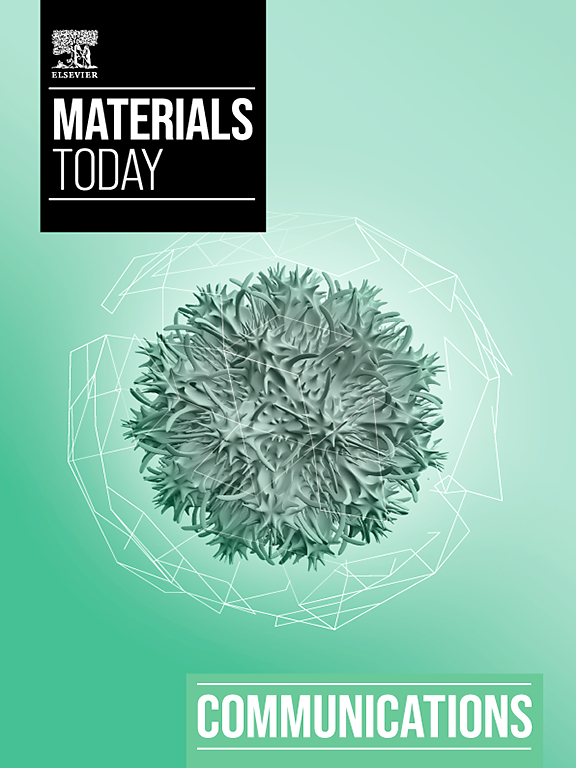对激光熔覆 β 型 TiNbZr 涂层的微观结构、力学性能和骨结合能力的评估
IF 4.5
3区 材料科学
Q2 MATERIALS SCIENCE, MULTIDISCIPLINARY
引用次数: 0
摘要
由于生物活性不足、潜在过敏反应和机械性能受限,生物医学钛合金在医疗领域的应用受到限制。表面改性被认为是增强植入物与生物系统相互作用的有效方法。本研究利用激光熔覆改性技术在 Ti6Al4V(TC4)上成功制作了不同 Zr 含量的 β 型 TiNbZr 合金涂层,目的是增强基质与骨组织之间的机械互锁性。研究人员对涂层的机械性能和生物活性进行了深入研究,以评估其作为植入材料的可行性。结果表明,基质表面已成功涂覆了一层冶金结合层,平均厚度为 844.596 ± 51.208 μm。锆含量的增加促进了α+β双相结构向β相结构的转变。涂层的平均硬度为 381.42 HV,双相结构的硬度超过了单相结构;尤其是 5 wt% Zr 的硬度值(406 HV)最高。腐蚀电流降低了两个数量级,主要发生局部腐蚀,形成微裂缝和腐蚀坑。表面粗糙度与接触角呈反比关系,表面亲水性和微米级粗糙度(0.726-0.945 μm)有利于细胞粘附。此外,在生物矿化试验中形成的 Ca/P 相证明了涂层具有促进细胞生长的生物活性。这项研究为设计和优化具有优异耐腐蚀性、更高硬度和生物活性的 β 型 TiNbxZr 合金涂层材料提供了新的视角。本文章由计算机程序翻译,如有差异,请以英文原文为准。
Evaluation of microstructure, mechanical properties and osseointegration capacity of laser cladding β-type TiNbZr coatings
Biomedical titanium alloys exhibit limitations in their application within the medical field as a result of insufficient bioactivity, potential allergic reactions, and constrained mechanical properties. Surface modification is regarded as an effective method to enhance the interaction between implants and biological systems. In this study, β-type TiNbZr alloy coatings with varying Zr content were successfully fabricated on Ti6Al4V (TC4) using laser cladding modification technology, with the objective of enhancing the mechanical interlocking between the matrix and bone tissue. The mechanical properties and biological activity of the coating were deeply investigated to assess its viability as an implant material. The results indicate that the surface of the matrix has been successfully coated with a metallurgically bonded layer, exhibiting an average thickness of 844.596 ± 51.208 μm. An increase in Zr content facilitated the transformation of the duplex α+β structure into a β-phase structure. The average hardness of the coating was 381.42 HV, with the hardness of the duplex structure surpassing that of the single-phase structure; notably, the hardness value for 5 wt% Zr (406 HV) was the highest. The corrosion current was reduced by two orders of magnitude, and primarily localized corrosion occurs, with microcracks and corrosion pits forming. The surface roughness exhibited an inverse relationship with the contact angle, and the surface hydrophilicity and micron-level roughness (0.726–0.945 μm) were conducive to cell adhesion. Furthermore, the formation of the Ca/P phase during the biomineralization test substantiated that the coating exhibits biological activity conducive to promoting cell growth. This research offers novel perspectives for the design and optimization of β-type TiNbxZr alloy coating materials with excellent corrosion resistance, higher hardness, and biological activity.
求助全文
通过发布文献求助,成功后即可免费获取论文全文。
去求助
来源期刊

Materials Today Communications
Materials Science-General Materials Science
CiteScore
5.20
自引率
5.30%
发文量
1783
审稿时长
51 days
期刊介绍:
Materials Today Communications is a primary research journal covering all areas of materials science. The journal offers the materials community an innovative, efficient and flexible route for the publication of original research which has not found the right home on first submission.
 求助内容:
求助内容: 应助结果提醒方式:
应助结果提醒方式:


